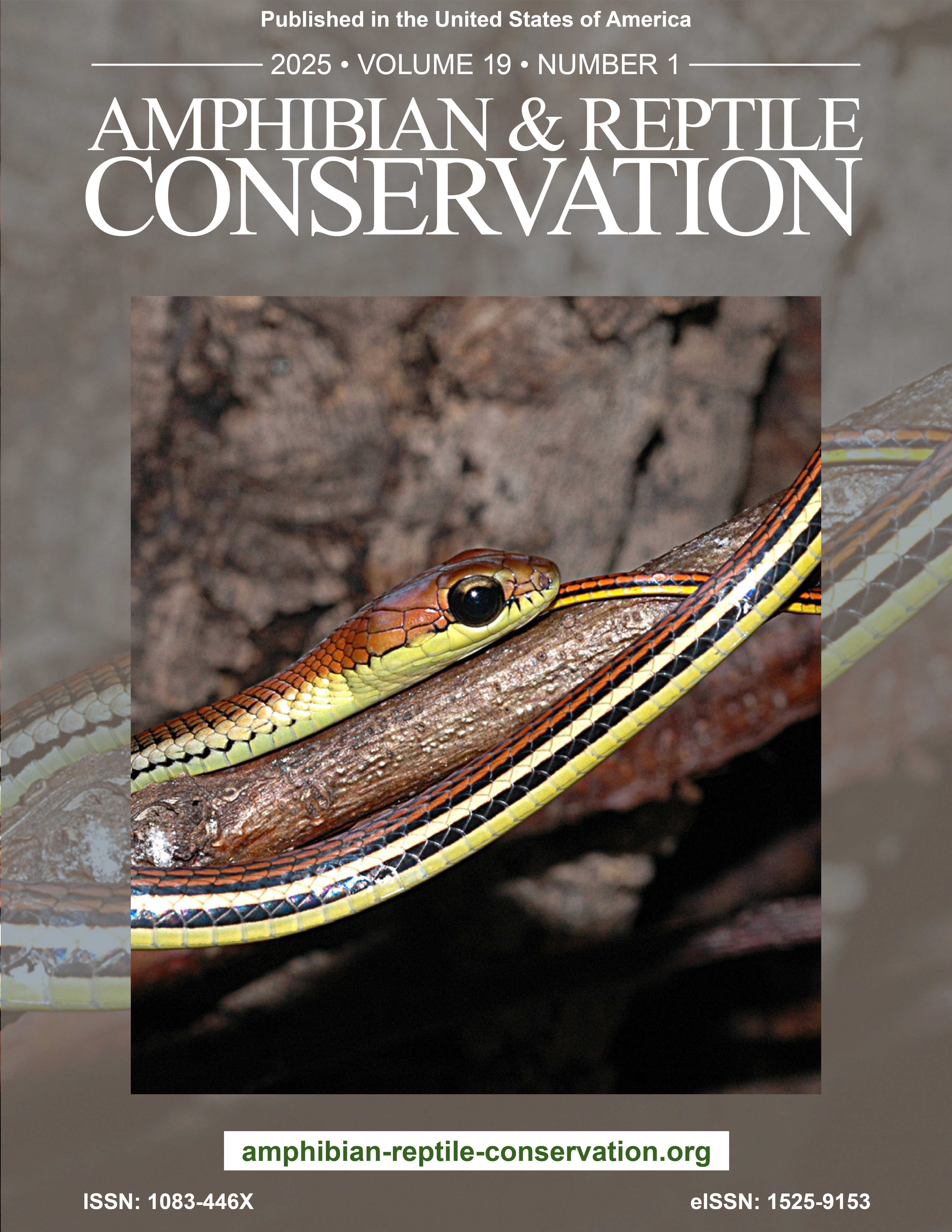The long-term impact of the pathogenic fungus Batrachochytrium dendrobatidis on a neotropical salamander community in Mexico
Keywords:
Amphibian declines, chytridiomycosis, elevational gradient, historic comparison, Plethodontidae, VeracruzAbstract
Mexico ranks first in salamander diversity in the Neotropical region, and most species are threatened by habitat loss and emerging diseases. The pathogenic fungus Batrachochytrium dendrobatidis (Bd) is associated with severe amphibian population declines worldwide, particularly in the Neotropics, but the extent of the declines at the amphibian community level is not completely understood. In central Veracruz, Mexico, the fungal pathogen Bd has been detected in the salamander hotspot on the Cofre de Perote volcano. In this study, we evaluated the presence of Bd and its potential link to population declines and changes in the salamander community in this region. First, we characterized the current salamander community along the elevational gradient of Cofre de Perote through fieldwork. Then, we assessed shifts in the salamander community in historical and contemporary frameworks covering a time window of more than 40 years. In addition, we investigated the presence of Bd over time in this region in both formalin-preserved and recently collected specimens. Finally, we analyzed the associations between habitat and host species traits with current Bd prevalence and infection load. The results indicated that the salamander community of Cofre de Perote experienced significant reductions in abundance, species richness, and diversity over the past ~40 years. The declines in two species distributed at 2,400 m asl are potentially related to Bd. Meanwhile, population fluctuations recorded before the first appearance of Bd in the region or in recent sampling were probably related to habitat loss and stochastic factors. The prevalence of Bd was mainly influenced by host species, while infection load was associated with tree density. The results suggest that Bd is likely one of several factors affecting these species and that its presence in this area of high salamander diversity remains a threat.
